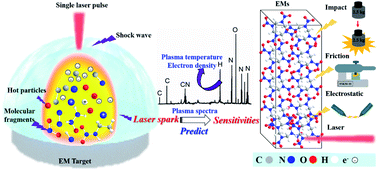The sensitivity determination of energetic materials from laser spark spectrometry based on physical-parameter-corrected statistical methods†
Abstract
The traditional large-dosage and dangerous methods for the determination of the sensitivities of energetic materials (EMs) have always led to low-accuracy diagnoses with poor repeatability, since they are affected by crystalline quality, experimental conditions, etc. Herein, a simple method is developed to determine various sensitivities, such as impact sensitivity, friction sensitivity, electrostatic sensitivity, and laser sensitivity, via laser spark spectrometry (LSS), with the consumption of only several milligrams of EM, rather than macro-detonation testing. Based on suitable correlated prediction models using the entire LSS spectrum and physical-parameter-corrected statistical regression, the friction sensitivity, electrostatic sensitivity, and laser sensitivity can be well predicted, evaluating the impact of various factors on sensitivity. The correlations between plasma temperature and impact sensitivity, electron density and friction sensitivity, and oxygen balance and electrostatic sensitivity are also clarified. This can facilitate sensitivity predictions with high precision. This method provides a safe, low-dosage, high-precision, and low-cost approach for sensitivity estimations of EMs.



 Please wait while we load your content...
Please wait while we load your content...